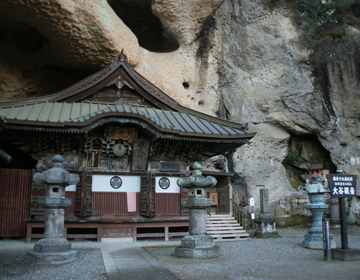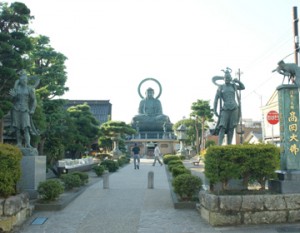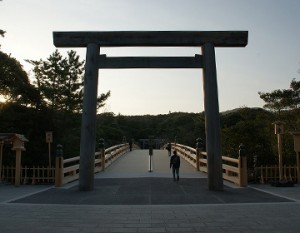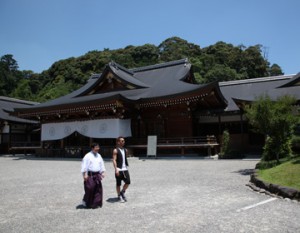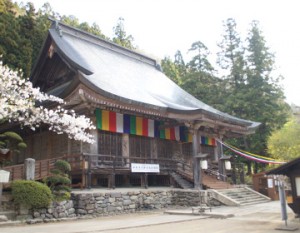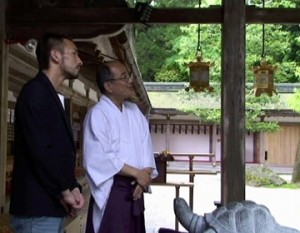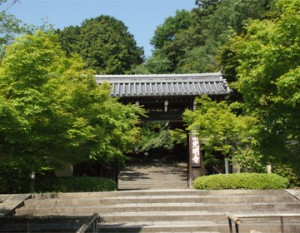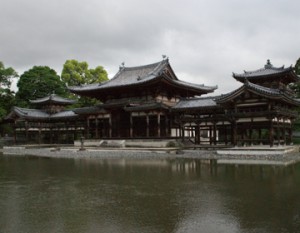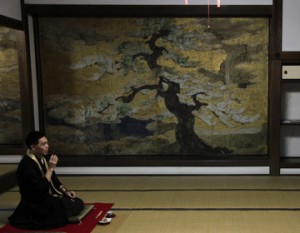Jomon Era Cave Habitat
Almost everyone visiting Ooyaji Temple will be surprised seeing the mountain made of huge strange rocks. At the foot of the mountain, a “Kannon-do” hall (hall dedicated to Goddess of Mercy in a temple) is build underneath the rocks as if it were tucked in. Many may wonder “Why was such building built here?”
But these rocks are greatly related to the history of this area.
Way before the founding of Ooyaji Temple, a cave believed to be human habitat from the Jomon period remains in this rocky mountain and is preserved as “Ooya Iwakage Iseki” ruins (Ooya Rock Shelter Ruins).
The cave is believed to be a lateral hole dwelling from the early Jomon period, and human skeleton form about 11,000 years ago has been unearthed. (*A part of the skeleton is exhibited in the Treasure Museum in Ooyaji Temple.)
And in the stone walls of the ““Ooya Iwakage Iseki” ruins, “Magaibutsu” or cliff-carved Buddhas are engraved.
In other words, Ooyaji Temple is a rare place which is not only a Nationally Designated Special Historic Site for being a Jomon historic ruin, but is also designated Important Cultural Properties as a Buddhist historical site
Presence of “Magaibutsu” on Stone Walls
Ooyaji Temple is said to have been founded in 810 in the Heian period when Kobo Daishi carved the principal statue Senju Kannon. Besides Senju Kannon, there are altogether 4 sets of stone Buddhas left at present including “three Buddhas of Shaka”, three Buddhas of Yakushi”, and “tree Buddhas of Amida” totaling in 10 statues. The chief priest showed us inside of the cave.
“In the beginning, the stone Buddhas were covered with gold leaf. It reveals similarities with the stone Buddhas of Bamiyan, probably a method of carving passed directly from the Silk Road. They must have been quite impressive in appearance, but unfortunately the gold leaves have fallen over the many years. We’ve had many fires, and so the statues were damaged.”
“And the people of the past, they really did a good job at carving.” Said Nakata.
“Yes, that is true. Scholars of Tochigi Prefecture have continued studies, and the statues are considered to have been made in the later Nara period.
The theory is that they were made mainly by second-generation disciples of Ganjin who founded Toshodaiji Temple.
At that time, domain of the Nara Imperial Court extended as far as Tochigi. Therefore, the status may have been made as a national project at the northern strategic point. “
The chief priest spoke to us in front of the cliff-carved Buddhas, “Buddha has no sects, only the worshippers have sects.”
Humans have lived in this land for may long years, the cliff-carved Buddhas and the temple have remained as a ground of worship. Ooyaji Temple may be a place where visitors can reflect on that history.



